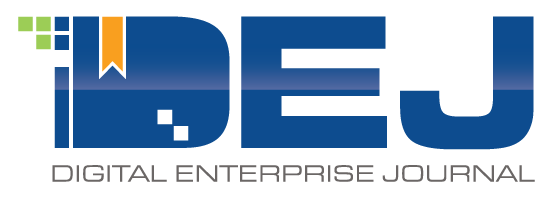We recently completed a survey around key areas of IT performance monitoring that includes insights from more than 500 organizations worldwide. This is the 19th survey that our team conducted since 2009 and the study also provides comparison to more than 20,000 data points that we collected. It also provides insight into the role that these technologies are playing in digital economy through a breakdown between responses from IT and business executives and professionals, maturity levels, the value of these technologies in transforming IT departments and creating competitive advantage and a new set of metrics and requirements for dealing with technology and business pressures that digital economy brings.
The combination of our 2016 research and trending data shows that this market has been changing at a very rapid pace. One of the key takeaways is that major changes in IT and service delivery created a number of new growth opportunities and caused a power shift in many different areas.
The research covers multiple technology segments in this market and here is a brief rundown of 20 key areas that are defining the new shape of this market:
- Analytics. Ranked #1 in 3 key areas: 1) driver of new market growth; 2) biggest impact on addressing key challenges; 3) technology class that is introducing the most innovative capabilities.
- Demonstrating business value. Ranked #2 in driving a new market growth. The impact on business performance has been one of the key value proposition in this market for a while, but in light of digital economy, organizations are expecting visibility into improvement of a new set of business-technology KPIs.
- Beyond troubleshooting. This is one of the key stories of the study, as forward-thinking organizations are starting to look at these technologies beyond just preventing problems and getting to the root cause faster and are looking to also leverage them in other strategic areas.
- Job roles. The trending data shows a major uptake in the roles of Service Delivery Managers and business owners when it comes to deriving value from these solutions and making purchasing decisions.
- Reducing complexity. Key selection criteria for 71% of organizations.
- Digital performance enablement. This subject ranks very high in almost every category of this research. Some of the key areas where it is listed as one of the top requirements include: 1) business-technology alignment; 2) strategy creation; 3) growth and transformation; 4) plans for future deployments.
- API performance. Ranked #1 in terms of importance as compared to any other technology use case.
- Mobile performance. Ranked in the top 3 in 2 key areas: 1) technology source of competitive advantage; 2) key management and visibility challenges.
- Time to value. Consistently the top selection criteria since 2010. Organizations that are looking to become digital businesses are starting to leverage a new set of metrics to calculate ROI of technology purchases that makes time-to-value even more important in the selection process.
- Automation. 71% increase in the interest in capabilities for automated problem resolution and prevention since 2011.
- Performance testing. Ranked in the top 3 in 2 key categories: 1) selection criteria for business owners; 2) alignment with goals of digital businesses.
- New definition of user experience. The study shows that not only are organizations moving beyond only availability and response times when measuring the quality of user experience (which has been a steady trend since 2010), but they are increasingly incorporating metrics such as application usage, business impact throughout the value chain (customers, partners, suppliers, etc.) and a real view of interaction with their services across different delivery methods and use cases.
- DevOps. 59% of organizations reported that Operations are behind Developers when it comes to agility and ensuring performance of services delivered.
- Monetizing data. 44% of organizations reported that they discovered, or are looking to discover, new ways to monetize data collected by IT performance tools. This includes areas such as customer engagement, strategic and operational decision making and creating new revenue streams.
- Vendors’ approach. More than 40% of organizations listed transparency of pricing and total cost, flexibility of deployment options and vendor’s understanding of their business needs as high or very high in terms of the importance of their selection process.
- More strategic role of the network. The study shows 61% of an increase in the number of organizations reporting that network monitoring is playing a more strategic role in their technology and business efforts since 2009.
- End-to-end. The study shows 37% increase in the importance of having a holistic service view and end-to-end application performance visibility since 2011. The research also shows that 29% of organizations are looking to adopt these types of capabilities in the next 12 months.
- Security and performance. 41% of organizations reported that they are looking to leverage their IT performance monitoring solutions for security purposes. This is a significant increase since 2011, when only 17% of organizations showed an interest in this type of capability.
- Cloud performance. Performance visibility is still one of the top obstacles for many organizations for deploying more cloud services. Key areas of concern reported are: 1) user experience management; 2) cost to “rip-and-replace” management tools; 3) transparency.
- Microservices. This has become one of the top areas of interest from the management perspective, as more than one-third of organizations give it a high level of importance when selecting IT performance monitoring solutions.













